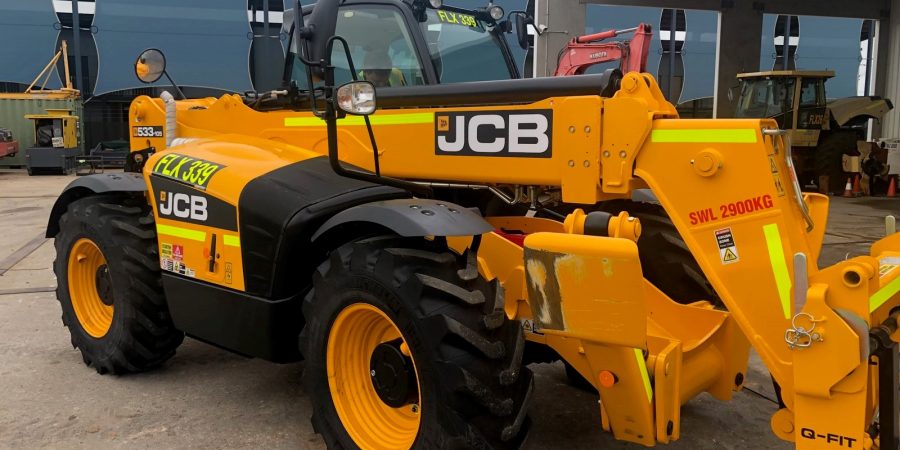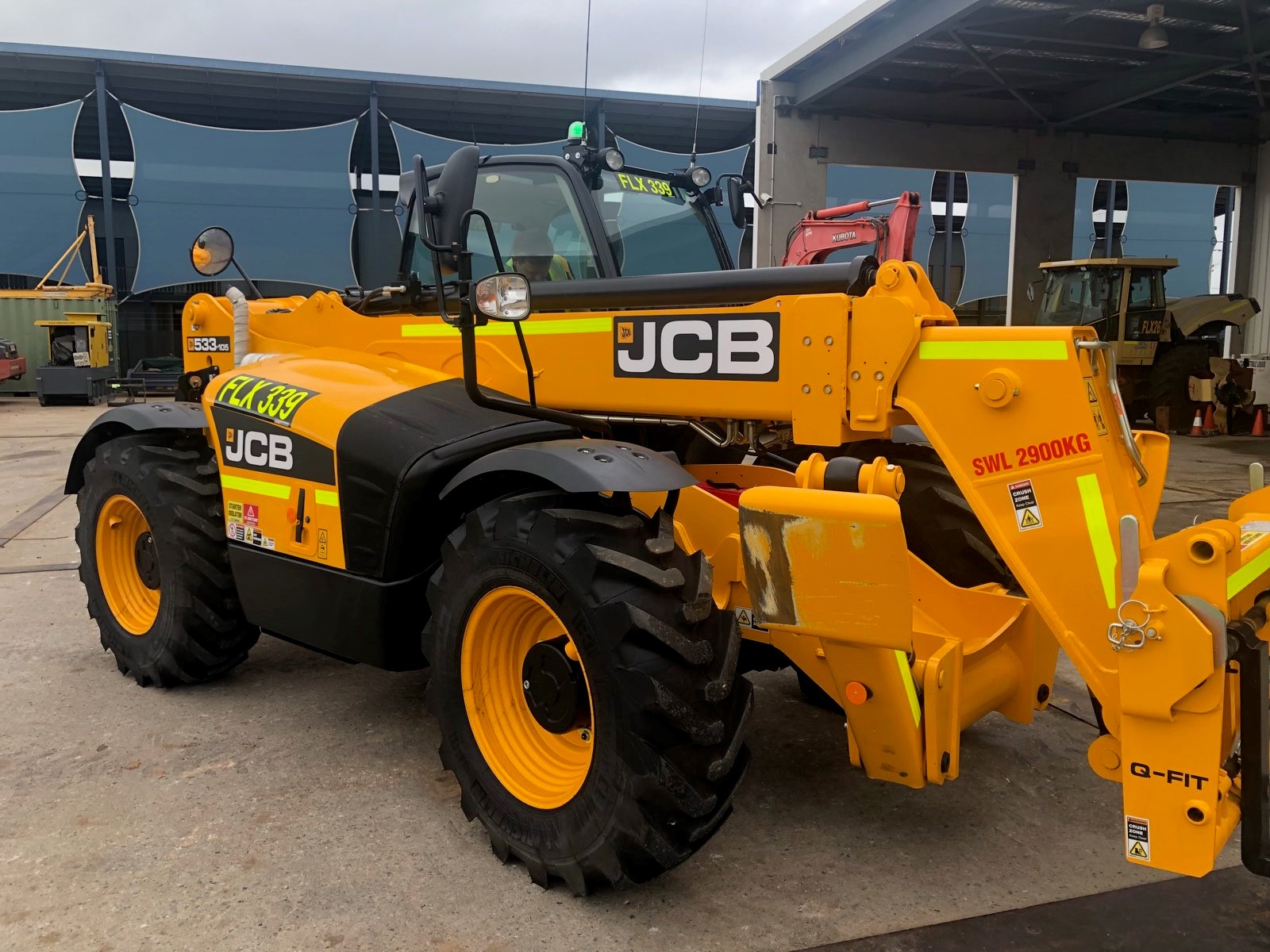Telescopic Handlers have rapidly become one of the most versatile pieces of equipment in use, in the construction or agricultural industries. But there are risks when buying any piece of equipment, and certainly, the case when you are looking at buying a telescopic handler. Let’s take a look at if you should buy a grey import telescopic handler.
Why Does it Matter?
Telescopic handlers that are sold in Australia need to be compliant with the latest WH&S legislation in meeting the relevant Australian Standards and regulations.
Buying a new or used Telescopic handler in Australia that despite what the seller tells you, doesn’t comply with the Australian standards related to manufacture & safety is referred to as a Grey Import or parallel import.
Buy buying a non-compliant “grey Import “ telescopic handler increases you, the company that you work for, and the operators’ risk of accident or incident.
So let’s get into explaining the risks and dangers you need to be aware of when owning a “grey Import” telescopic handler.
What do the words mean
“Grey Import” refers to equipment that has been imported into Australia which might be legally imported into Australia, but without the manufacturer’s knowledge or endorsement.
Grey Import telescopic handlers are second-hand equipment imported into Australia from overseas, that receive no official or legal support from the manufacturer dealer network in Australia, unfortunately, these types of telescopic handlers are passed off as Australia Compliant Telescopic handlers.
Parallel Import
A Parallel Import is typically a brand-new Telescopic from overseas without direct involvement or knowledge of the Australian-endorsed dealer or manufacturer.
The same as Grey imports these are often passed on to Australian Regulations.
What to do when you are buying a Telescopic handler
There is plenty that you can do if you take the time and do a little bit of research. Before you consider buying, owning, or using a “grey import” or parallel import, take some time to do some checks, it could just save you money, lost time, and lots of stress.
Some of these checks can include:
- Check to make sure it meets safety and design requirements relating to Australia Standard AS1418.19 (Design and Manufacture) and safe use and maintenance Australia Standard AS2550.19. The big thing is has the Telescopic Handler been verified as compliant? Look at the rating plate it should state that it is compliant
- Make sure that the load charts reflect Australian conditions and the attachments that are fitted.
- Is it in English and Metric?
- Does the rating plate state 600mm load center capacities or altered capacities for any attachments fitted?
- Is the Telescopic handler supplied with an Australian Compliant Operator Manual?
- Who imported the Telescopic handler for sale?
- You can always ring the local manufacturer’s dealer to check the serial number.
- Does it have a warranty supplied?
- If something goes wrong, will the Australian authorized dealer support the warranty?
- Can you get spare parts easily enough? Are you able to get mechanical support and backup when you need it?
- The thing to know is that under Australian Consumer Law – A business must not supply particular kind of goods unless they comply with any relevant safety standard in force for that kind of goods
- So in the event of an accident who has the liability for the design, construction, conformity, and maintenance requirements for the telescopic handlers
- If you are the importer of imported grey or parallel Telescopic handers you are liable under current Australia Consumer law for any warranty and product defect claims.
- At the end of term the resale value of a non-compliant TSH will be seriously reduced and liability for future issues not necessarily eliminated.
- For anyone trying to advertise and sell the Telescopic Handler the TSH and try to pass it off as compliant, you are breaching the ACL provisions of misleading or deceptive conduct towards consumers or businesses.
- Is the TSH in the condition it is advertised? Does the TSH have the correct documentation including maintenance records, compliance plates, and more? WH&S regulations include major penalties and fines where no records exist.
What RISKS & CONSEQUENCES do you have
If you do purchase or even use a non-compliant TSH the following may apply:
- Insurance coverage will not be valid. In the case of an accident. Most insurance companies will all claim exemption as the TSH was not what you said it was.
- If the TSH is non-compliant but claims to be compliant. You may fall foul of the OH&S Acts which will result in financial and legal proceedings.
- State Regulations can issue a prohibition notice on your TSH. As you are the owner you will not get any assistance from the importer or the overseas supplier.
- There will be no technical support or access to the correct spare parts and maintenance services. 5. Your reputation and standing in the business community will be heavily damaged.
What you can do about it?
The TSHA has a Pre-Acceptance Checklist that is available online for download and is free of charge.
The checklist should be used before you part with your hard-earned money. If the Telehandler does not meet the checklist requirements DO NOT PROCEED.
Always contact the original manufacturer and check the serial number. If the manufacturer does not have representation in Australia you are probably going to get burnt.
Finally, if the Telehandler does pass the checklist, always inspect and test drive the unit before talking about price. Never buy a Telehandler second-hand sight unseen! No matter how genuine and cooperative the seller sounds.
If you are still unsure, contact the TSHA on Ph: 02 9998 2222 or info@tsha.com.au.
What is the industry doing about this issue?
The TSH Association members only include those companies who are the original equipment manufacturer or affiliated with them. If the seller is not a member then find out why.
The TSH industry is in cooperation with other machinery and equipment manufacturers, distributors, and owners. Continue to work closely with Government, Federal, State, and regulators. In an attempt to eliminate the Grey Import problems and improve safety in the workplace.
Which is not an easy challenge due to the difficulty of tracking down individual offenders before the deal is done. Hence the need for all industries to cooperate in this challenge before more accidents




Leave a Reply